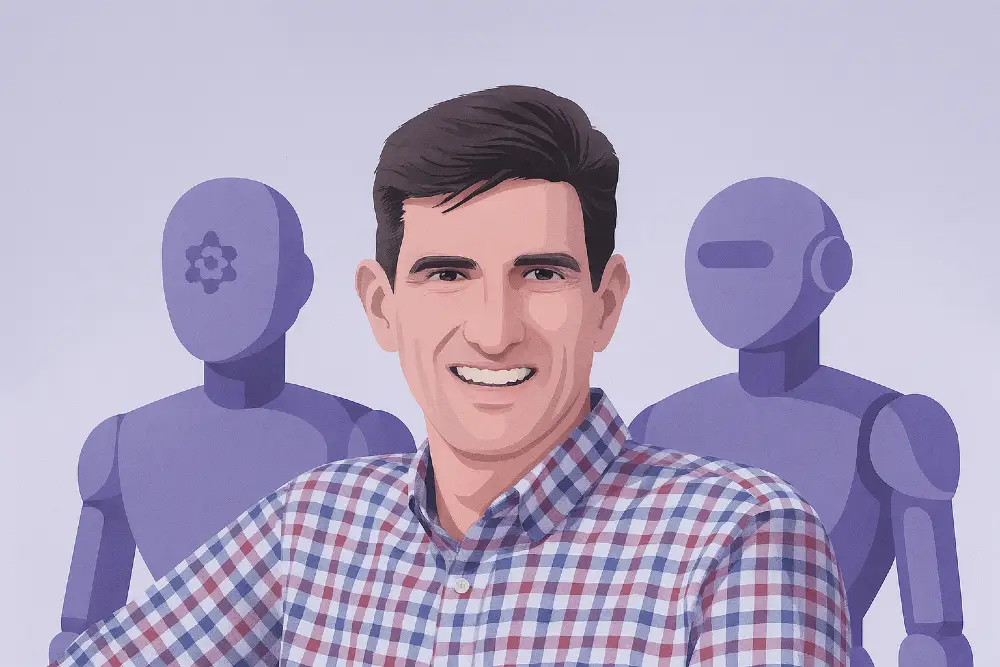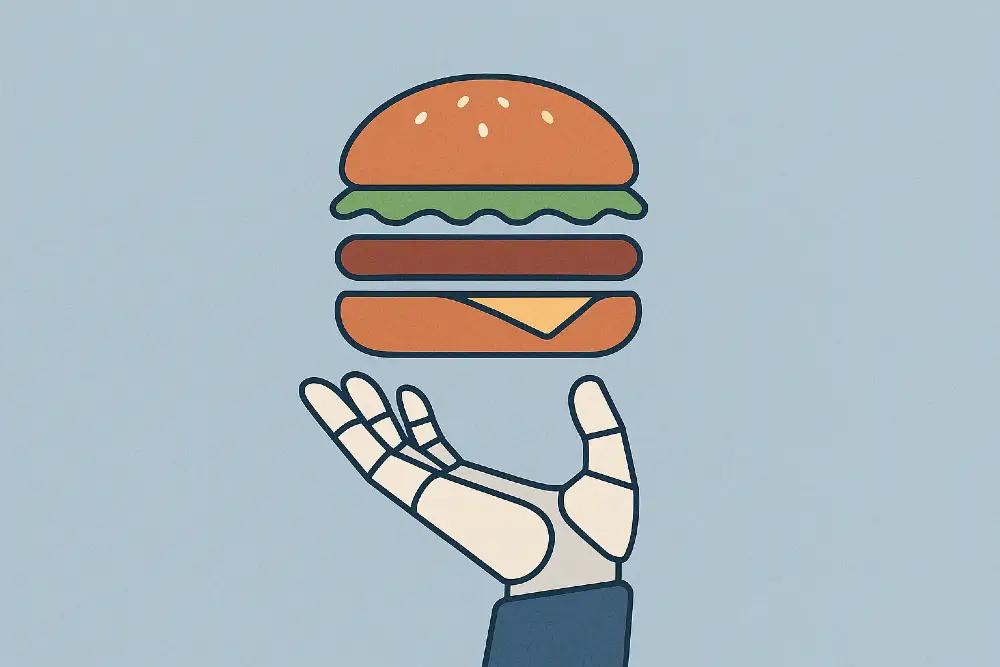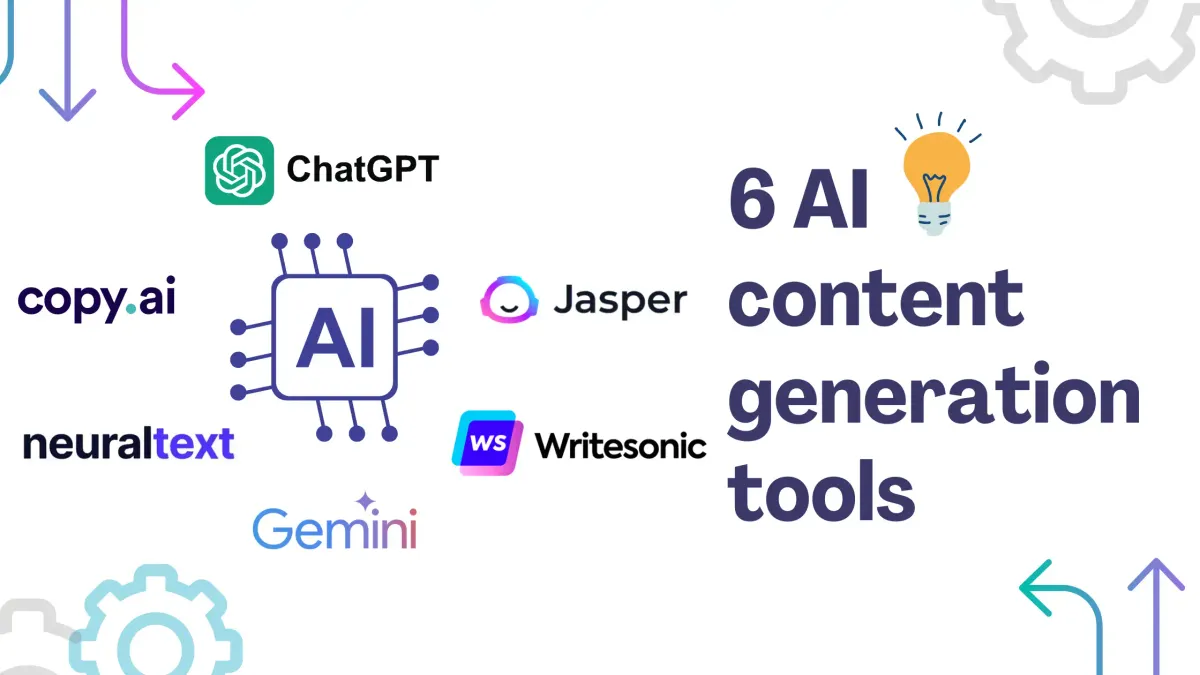AI jury system outperforms ChatGPT: B2B SaaS expert's method
B2B SaaS startup valuation expert Brad Hanks shares how his unconventional AI workflow achieves superior results using DeepSeek, Qwen, and Claude AI in a collaborative "jury" system that eliminates single-model bias.

B2B SaaS startup valuation consultant Brad Hanks has developed an unconventional approach to AI that's helping early-stage companies create higher-quality content while accelerating their path from seed to Series A funding. Unlike most marketers who rely on ChatGPT, Brad employs a multi-model "jury system" using DeepSeek, Qwen, and Claude to produce what he calls "centaur-generated" content—superior to what either humans or AI can create independently.
SeriesLab, Brad's B2B SaaS startup valuation consultancy, specializes in helping technology startups navigate the critical 0-18 month period between seed funding and Series A rounds. The firm provides martech solutions, user growth strategies, attribution analytics, and fractional CMO services designed to maximize startup valuations. With offices across multiple US markets including Solana Beach, Boulder, Lehi, and Portland, SeriesLab has helped numerous startups achieve successful funding rounds by focusing on traction, user growth, and unit economics optimization.
In this interview, we dive deep into Brad's unconventional AI methodology, his strategic approach to model selection beyond ChatGPT, and how B2B SaaS marketers can implement his "centaur AI" philosophy to create superior content while maintaining cost efficiency.
Beyond the ChatGPT hype: Strategic AI adoption for B2B marketers
Brad's approach comes at a time when AI adoption in marketing is reaching critical mass. According to recent industry data, 61.4% of marketers have used AI in some form, with 98% planning further adoption. For B2B SaaS companies specifically, 86% of professionals agree that automation is crucial for more effective operations management.
"I've been playing around with AI generative text models since way before it was good enough," Brad explains. "That was probably about 2020. But it's been useful probably in the last 18 months where I would say AI is adding a lot on top of what I'm doing already."
While most marketers default to ChatGPT, Brad deliberately avoids it in favor of three specific AI models: DeepSeek, Qwen (from Alibaba), and Claude. His reasoning challenges conventional wisdom about AI tool selection and reflects a deeper understanding of how different models excel in specific use cases.

"ChatGPT obviously has the name recognition, but I think they've fallen behind in terms of the actual results," Brad notes. "And I think you get a lot more value at the free tier for these other options." This cost-effectiveness consideration becomes crucial for startups operating on limited budgets, where every dollar counts toward extending runway and achieving key milestones.
His strategic model selection centers on specific strengths rather than brand recognition. DeepSeek excels at handling extensive context windows and long conversations, making it ideal for complex projects with abundant source material. "DeepSeek is really great because it can consume the most amount of context, both in a single prompt and also in a conversation," he explains. The platform also offers generous usage limits without requiring premium subscriptions.
Qwen delivers superior creative output and polished copy, particularly valuable for marketing applications requiring dense, high-quality content. "Qwen probably does the best one-shot content improvement," Brad notes, making it his go-to choice for crafting compelling taglines, brand names, and executive-level communications. Meanwhile, Claude handles the most sophisticated reasoning tasks and complex problem-solving scenarios that require nuanced analysis.
Each model serves a specific purpose in his workflow:
- DeepSeek: Excels at handling large context windows and extended conversations, particularly effective for basic development tasks and content with abundant source material
- Qwen: Delivers the most polished copy and creative output, ideal for marketing taglines and dense, quality-focused content like brand naming
- Claude: Performs best on complex, advanced problems requiring nuanced reasoning
The revolutionary jury system approach
Brad's most innovative contribution is his "jury-based system" that leverages multiple AI models to evaluate and improve content. This approach, typically implemented through APIs rather than user interfaces, represents a sophisticated evolution beyond single-model dependencies that most marketers rely on. As a self-described "marketing technologist," Brad brings a rare combination of marketing expertise and programming knowledge that allows him to implement these technical solutions.
The methodology challenges the conventional approach of using one AI model for content creation. Instead of accepting the first output from any single platform, Brad's system creates multiple versions and subjects them to systematic evaluation. "I haven't seen jury approaches, but I think that one of the reasons it might not be being done is I don't know how well it scales," he acknowledges, noting the increased token costs but emphasizing the quality improvements.
The process addresses a critical weakness in traditional AI usage: model bias and inconsistent quality. By leveraging multiple models and evaluation rounds, the system produces content that combines the strengths of different AI approaches while minimizing individual model limitations.
How the jury system works
The implementation follows a structured three-step process:
• Multi-model content generation: Feed identical prompts to DeepSeek, Qwen, and Claude, including detailed persona information, business goals, and full context about the target executive or publication
• Jury evaluation process: Using fresh AI sessions to avoid bias, present the three generated responses to multiple instances of the preferred model (typically nine separate browser windows or API calls), with each "juror" evaluating which response is strongest and identifying beneficial elements from other options
• Synthesis and refinement: Based on jury consensus, manually review and refine the winning approach, often incorporating strengths from runner-up responses to create the final output
The centaur AI philosophy and real-world applications

Brad describes his approach using the chess analogy of "centaur AI"—the concept that humans collaborating with AI outperform either alone. This philosophy directly addresses concerns about AI replacing human marketers and provides a practical framework for implementation.
"An AI collaborating with a grandmaster can actually outperform AI by itself," he explains. "AI is not a replacement—it's an augmentation. It produces results better than what AI or a human can achieve alone."
In practical terms, this translates to a 60-20-20 workflow distribution: Brad contributes 60% of the effort, AI handles 20%, and the final executive or client provides the remaining 20% for personalization and approval. This maintains the same quality output while reducing individual workload and improving the final product.
Brad's primary use case focuses on ghostwriting thought leadership articles for C-suite executives—a critical component of B2B SaaS marketing strategy. This content serves dual purposes: raising executive profiles and generating high-quality backlinks for SEO value. His process involves creating detailed persona information for each executive, including their background, previous articles, and writing style samples. The AI models then generate content that matches the executive's voice while addressing specific business goals and target publications.
Balancing automation with human insight: The hamburger framework

When discussing the broader balance between AI automation and human creativity, Brad employs a memorable analogy comparing AI to a hamburger structure. This framework helps marketers understand where to invest human effort versus automated processes.
"AI is the bun. You start with AI and you end with AI, and it's necessary, but it's not the best part of the burger," he explains. "Where's the beef? The beef is the human contribution—the experience someone brings from work experience and creativity."
This perspective challenges marketers to view AI as essential infrastructure rather than the primary value creator. The human elements—strategy, creativity, industry knowledge, and relationship building—remain the differentiating factors that drive business outcomes. For B2B SaaS companies competing in crowded markets, this distinction becomes crucial for maintaining authentic brand voice and strategic direction.
Brad's approach prioritizes cost-effectiveness and scalability, particularly important for early-stage startups operating on limited budgets. By utilizing free tiers and avoiding premium ChatGPT subscriptions, his method delivers superior results at lower costs. "You get a lot more value at the free tier for these other options," he notes.

Strategic implications and future outlook for B2B SaaS marketing
Brad's methodology addresses a critical challenge facing B2B SaaS companies: creating authentic, high-quality content that resonates with sophisticated buyers while maintaining operational efficiency. With 74% of marketers already using at least one AI-driven tool, the competitive advantage lies not in AI adoption itself, but in sophisticated implementation approaches.
His jury system concept could prove particularly valuable for B2B marketers managing multiple stakeholders, complex sales cycles, and content that requires executive-level approval. The approach ensures quality control while reducing the back-and-forth typically associated with content creation and approval processes. For startups concerned about API costs, the jury system can be implemented manually through multiple browser windows, though this requires more time investment.
Beyond content creation, Brad emphasizes the importance of selecting the right technology infrastructure for B2B SaaS growth. He specifically highlights Integration.app as a game-changing platform for startups competing against established players. "They have over 3,000 integrations, like, ready to go, like, out of the box. And you don't need to read or understand the API documentation for any of the integrations," he notes. For startups trying to match enterprise competitors' integration capabilities, such platforms can dramatically accelerate time-to-market while reducing development costs.
As AI capabilities continue advancing, Brad emphasizes the importance of staying current with new functionalities. Recent developments include improved text extraction from screenshots, enhanced visual context analysis, and automated web browsing capabilities. "Every model is adding lots of new stuff all the time," he observes. "Just staying on top of what these LLMs can do and adjusting your approach to incorporate those new functionalities—that's probably big."
For B2B SaaS marketers, this suggests the need for ongoing experimentation and tool evaluation rather than settling into comfortable routines with familiar platforms. The trade-off becomes worthwhile for high-stakes content where quality significantly impacts business outcomes, particularly when competing for executive attention in crowded markets.
The bottom line for startup marketing teams
Brad's centaur approach offers a practical framework for marketing teams seeking to leverage AI without sacrificing quality or authenticity. By focusing on multi-model collaboration and systematic evaluation processes, startups can produce content that meets the sophisticated expectations of B2B buyers while maintaining operational efficiency.
The key insight extends beyond tool selection to process design: the most successful AI implementations may require combining multiple technologies in thoughtful ways rather than relying on single-platform solutions. For resource-constrained startups navigating the path to Series A funding, this methodology provides a scalable approach to content creation that grows more sophisticated alongside business needs.




